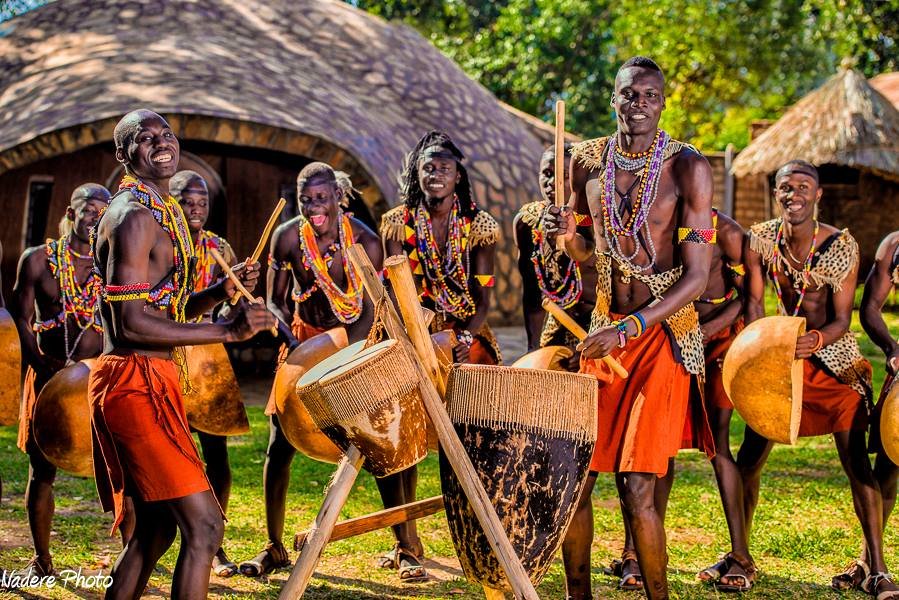Uganda is home to over 50 different ethnic groups, which are generally categorized into two major linguistic families: Bantu speakers in the south and west, and Nilotic speakers in the north and east.
- Bantu Groups: The Baganda are the largest ethnic group and have a significant influence on the country’s culture. Their traditional kingdom, Buganda, is a central part of their identity, with the Kabaka (king) as a revered leader. Other major Bantu groups include the Banyankole, known for their long-horned cattle, and the Basoga, who live near Lake Victoria.
- Nilotic Groups: In the north, groups like the Acholi and Langi are known for their strong warrior traditions and vibrant dances. The Iteso and Karamojong in the east and northeast are also Nilotic-speaking and have distinct pastoralist traditions.
Family and community are at the core of Ugandan society. Ugandans place a great value on respect for elders, hospitality, and communal support. Extended families often live close to one another, and traditional ceremonies are a way of strengthening community bonds.
Cuisine: A Taste of Uganda
Ugandan food is generally simple, fresh, and hearty. The cuisine is a blend of local traditions with influences from Indian, Arab, and British cultures.
- Staple Foods: The most common staple is matooke, a dish made from steamed, mashed green bananas. It is often served with a variety of stews, such as groundnut (peanut) sauce, or stews made with beef, chicken, or beans. Other popular staples include posho (a stiff porridge made from maize flour), rice, and sweet potatoes.
- Unique Dishes: A well-known street food is the rolex, which is a chapati (flatbread) rolled up with an omelette and vegetables. For a special occasion, you might find luwombo, a traditional Baganda dish where a stew of meat or fish is steamed in banana leaves, giving it a unique flavor.
Music and Dance
Music and dance are an integral part of Ugandan culture, used for storytelling, celebrations, and social gatherings.
- Instruments: The engoma (drum) is the most important musical instrument. Other instruments include the adungu (a harp-like instrument) and the endingidi (a tube fiddle). Each ethnic group has its own unique rhythms and styles of playing.
- Traditional Dances: Dances often represent aspects of daily life or tell stories. The Bakisimba dance of the Baganda is a graceful dance performed at royal ceremonies. The Ekizino of the Bakiga people is a high-energy dance with lots of foot-stomping, while the Ekitaguriro of the Banyankole mimics the graceful movements of their cattle.

